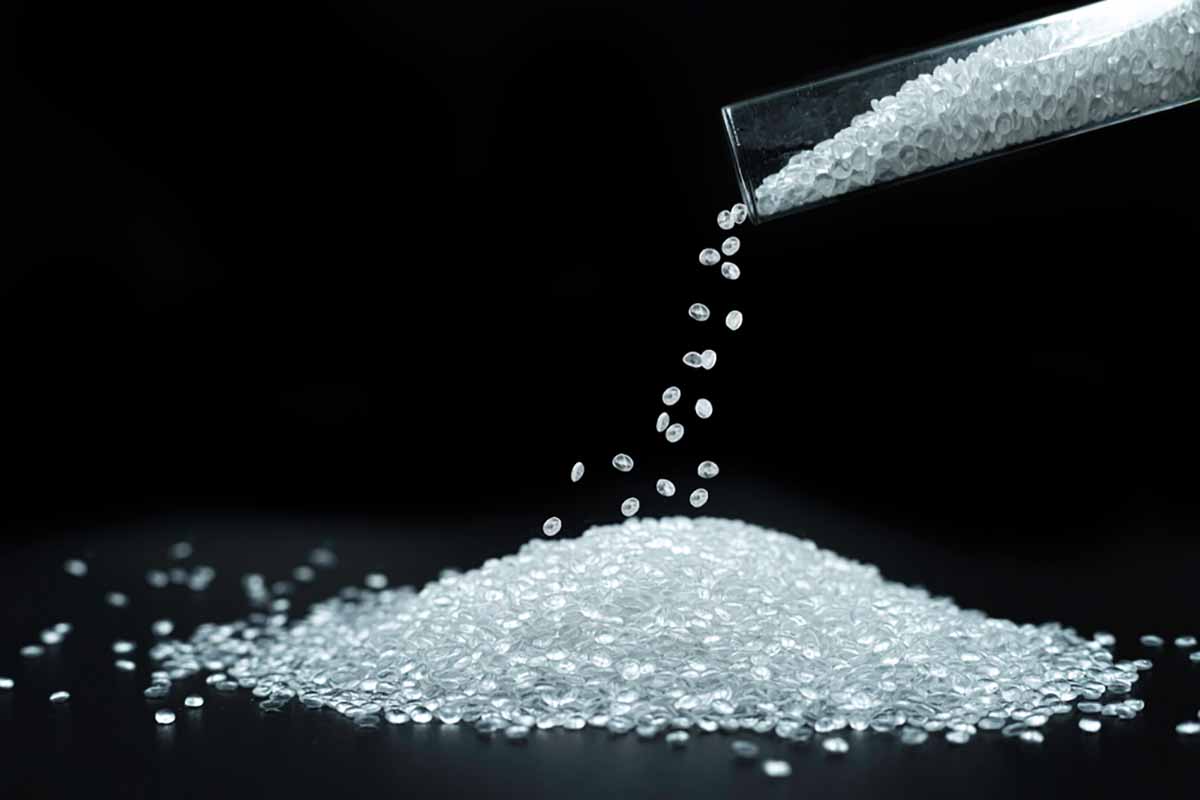
Emily Friedman, a recycled plastics senior editor at ICIS, expects steady growth in U.S. mechanical recycling capacity despite a slowdown on the announcement of greenfield facilities. | Zombiemaster/Shutterstock
After attending NPE 2024, ICIS’s Emily Friedman walked away thinking that producers of durables are showing interest in recycled resins, the plastics industry needs to add its voice to policy discussions, and there’s growth on the horizon for both mechanical and chemical recycling capacity.
Friedman, a recycled plastics senior editor at ICIS, shared those takeaways and more with Plastics Recycling Update. This was her first time attending the 2024 NPE plastic show, held in early May in Orlando this year.
“I definitely got a lot of interest from folks in the durables industry, which was very different,” Friedman said. “Currently, U.S. recycled plastic markets are dominated by consumer packaging and consumer goods,” but at NPE she was fielding questions about automotive applications and boat manufacturing possibilities for PCR.
The durable sector might be a better fit for recycled resin, she added, as “they don’t have small margin pressure or the same clarity or color requirements that some consumer goods packaging has.”
For example, “time and time again I would hear packaging companies and brand companies asking for or wanting recycled resin, but then if you started to dig into the specific qualities or property characteristics of that resin it really narrowed what was available, if anything was available at all,” Friedman said.
While there’s been a lot of attention paid to the disconnect between brand demand for PCR and suppliers noting a lack of markets to sell into, some of that is tied to how specific brand companies are getting when looking to source PCR, she noted.
“The recycled resin we have available, sometimes you just need to adapt to it and make that work for your packaging rather than trying to drop something in for something that was built for a virgin resin,” Friedman said.
However, the durables sector also lacks the policy pressures and voluntary goals that are currently driving up PCR demand in the packaging arena, so adoption might be slow, she added.
Looking at those policy pressures, Friedman noted that “a lot of people are still in the learning phase,” even as PCR mandates and some aspects of extended producer responsibility laws for packaging are starting to come into effect.
New Jersey’s 2022 law requiring PCR in rigid containers, carryout bags and trash bags came into effect in January and “caught a lot of players by surprise,” Friedman said.
“Maybe it shouldn’t have, but at the end of the day, several manufacturers were scrambling to understand if they were required to be in compliance and then how to get in compliance,” she said.
California’s recycled content requirements for PCR in plastic beverage containers will also increase to 25% in 2025.
As far as EPR for packaging goes, Friedman said it was exciting that Minnesota became the fifth state to pass such a law, but that as national attention shifts to EPR, recycled content mandates “will take a back seat.”
Even though some recent EPR proposals included language around recycled content – Minnesota’s bill did at first, but it was removed from the final version – Friedman said the focus has moved.
Chatter at NPE about the Global Plastics Treaty fell into the “wait and see” category, Friedman noted, as some companies are skeptical that a signable treaty will even come from the process, let alone if the U.S. will sign it.
If the U.S. does sign on, then it would create more of a federal framework for companies to work within, which Friedman said may come even without the global pressure.
“As soon as there’s enough state level EPR passed, brand companies will start heavily lobbying for federal framework,” she predicted, because of the heavy burden meeting so many different laws would create.
“It will be insurmountable,” she said. “They would prefer national EPR that is easier to comply with.”
In terms of markets, Friedman noted that “bioplastics” have entered the dialogue more quickly than anticipated in the past few months, even though there is little clarity around what that term actually covers.
She expects steady growth in U.S. mechanical recycling capacity despite a slowdown on the announcement of greenfield facilities, “which is very understandable considering the macroeconomic environment and the investment and capital environment.”
Most chemical recycling facilities announcements now are tied to large petrochemical companies “who have funding outside of a recycling operation,” Friedman said.
“We’ve definitely seen some growth and some new expected facilities in chemical recycling, but there’s also been more cancellation or delay of things that were announced in 2022, 2021 or even earlier,” she said.
In a presentation Friedman and ICIS colleague Andrea Bassetti gave at the 2024 Plastics Recycling Conference in Grapevine, Texas, earlier this year, they shared that of the chemical recycling capacity expansions ICIS is tracking, around 38% have delayed or canceled those plans.
The chemical recycling growth curve is exponential, Friedman noted, not because of the number of individual projects expected to come online but due to the sheer size of the few projects there are.
That huge input capacity would “in theory dramatically increase the chemical capacity in the U.S., but we’re all very aware of the feedstock reality,” she added.
Finally, a market disruptor to watch out for in the coming months is a stronger-than-usual hurricane season, Friedman said. The U.S. National Oceanic and Atmospheric Administration is predicting the greatest number of hurricanes it ever has, and that this hurricane season has an 85% chance of being above normal.
If hurricanes damage or halt Gulf virgin plastic production facilities this summer, it could cause a huge disruption in the market and supply chain, as many manufacturers are still “running very lean in inventory after the destocking of 2022 and 2023,” Friedman said.